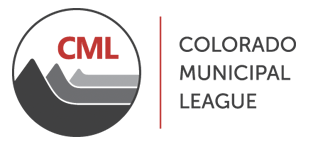State of Our Cities and Towns survey highlights the power of partnerships
In This Section
CML Newsletter
Jan 10, 2024
By Rachel Woolworth, CML municipal research analyst, and Alex Miller, CML publication and design specialist
Colorado Municipal League’s 2025 State of Our Cities and Towns survey, administered from August to October 2024, inquired about the power of partnerships between Colorado municipalities and other local governments, including counties, school districts, and special districts. Specifically, the survey investigated how such partnerships are helping cities and towns overcome challenges across the key areas of emergency services, housing, public transportation, and utilities.
As another legislative session begins, Colorado Municipal League’s advocacy team will utilize survey results to better understand the challenges Colorado’s municipalities are facing, as well as the collaborative solutions cities and towns are utilizing to address them.
This year’s data reminds us why it is imperative for the state legislature to provide local governments space to work together to create place-based solutions to local problems. The full report is available on CML’s website, cml.org.
Key findings
• Steady economies: Municipalities reported few changes to local economic performance. Revenue growth has declined slightly since 2021. Municipalities reported increasing revenue from sales and use taxes, charges for services, investment and interest income, and property taxes.
• Challenges: Unfunded state mandates were the top reported challenge for municipalities, followed by lack of affordable housing, street maintenance, and inflation.
• Partnerships: The most common areas for intergovernmental partnership included emergency services, elections, and economic development.
• High quality: About two thirds of municipalities reported that partnerships had improved the quality of municipal services.
• Emergencies: More than 80% of municipalities collaborate with other local governments to provide emergency services, including law enforcement, fire protection, and ambulance services.
• Housing: About 47% of municipalities reported partnering with other local governments on housing. Housing authorities are the most common form of collaboration. A majority of responding cities and towns have collaborated on housing needs assessments in the past four years.
• Public transportation: About 45% of municipalities reported partnering with other local governments to provide transportation. Fixed-route transit services, such as the Summit Stage bus route from Fairplay to Breckenridge, emerged as the most common area of partnership.
• Utilities: Half of responding municipalities provide at least one utility in partnership with another local government. About 85% of cities and towns provide broadband through a partnership. About 75% operate their own water utilities, while about 55% operate their own wastewater utilities.
As another legislative session begins, Colorado Municipal League’s advocacy team will utilize survey results to better understand the challenges Colorado’s municipalities are facing, as well as the collaborative solutions cities and towns are utilizing to address them.
This year’s data reminds us why it is imperative for the state legislature to provide local governments space to work together to create place-based solutions to local problems. The full report is available on CML’s website, cml.org.
Key findings
• Steady economies: Municipalities reported few changes to local economic performance. Revenue growth has declined slightly since 2021. Municipalities reported increasing revenue from sales and use taxes, charges for services, investment and interest income, and property taxes.
• Challenges: Unfunded state mandates were the top reported challenge for municipalities, followed by lack of affordable housing, street maintenance, and inflation.
• Partnerships: The most common areas for intergovernmental partnership included emergency services, elections, and economic development.
• High quality: About two thirds of municipalities reported that partnerships had improved the quality of municipal services.
• Emergencies: More than 80% of municipalities collaborate with other local governments to provide emergency services, including law enforcement, fire protection, and ambulance services.
• Housing: About 47% of municipalities reported partnering with other local governments on housing. Housing authorities are the most common form of collaboration. A majority of responding cities and towns have collaborated on housing needs assessments in the past four years.
• Public transportation: About 45% of municipalities reported partnering with other local governments to provide transportation. Fixed-route transit services, such as the Summit Stage bus route from Fairplay to Breckenridge, emerged as the most common area of partnership.
• Utilities: Half of responding municipalities provide at least one utility in partnership with another local government. About 85% of cities and towns provide broadband through a partnership. About 75% operate their own water utilities, while about 55% operate their own wastewater utilities.
